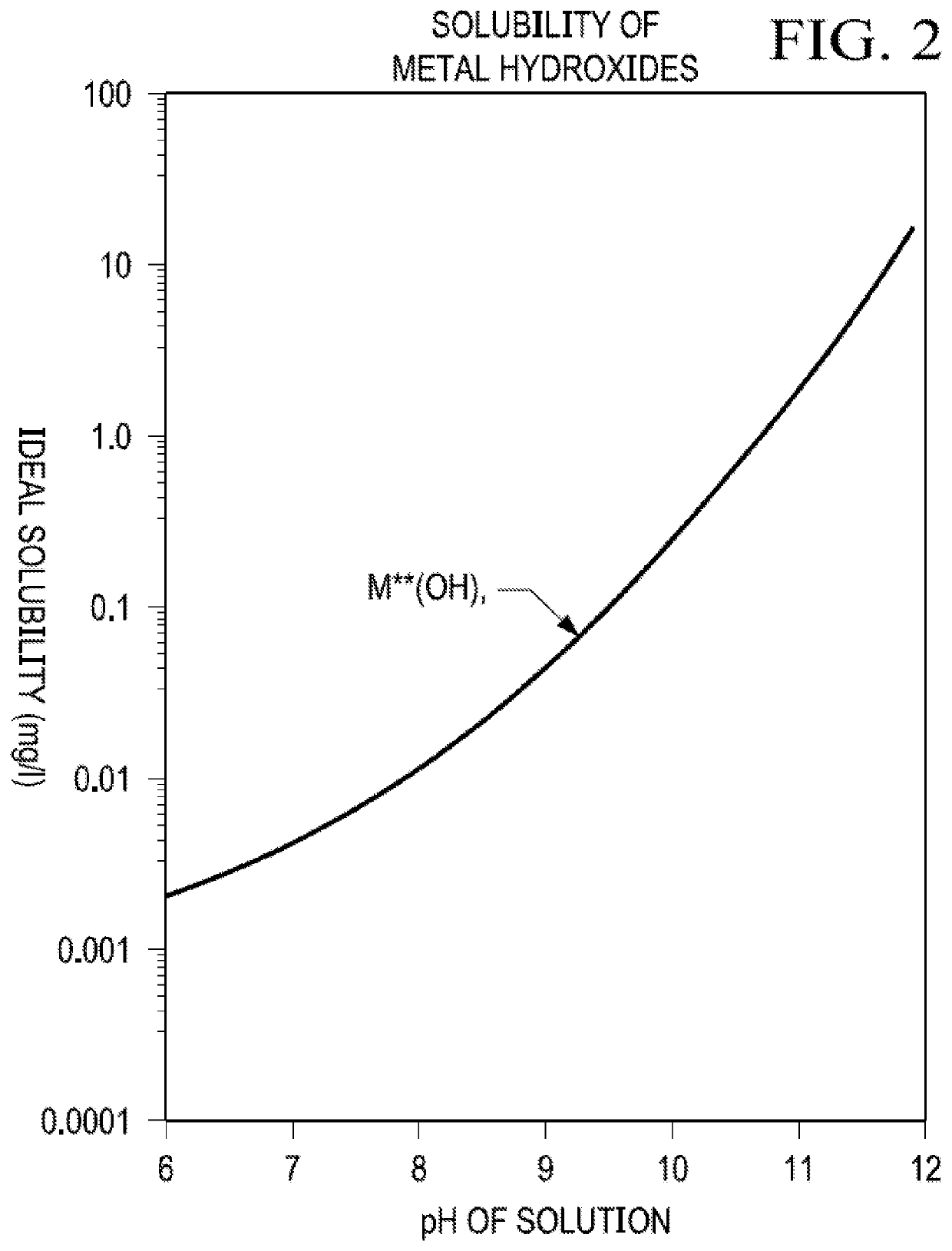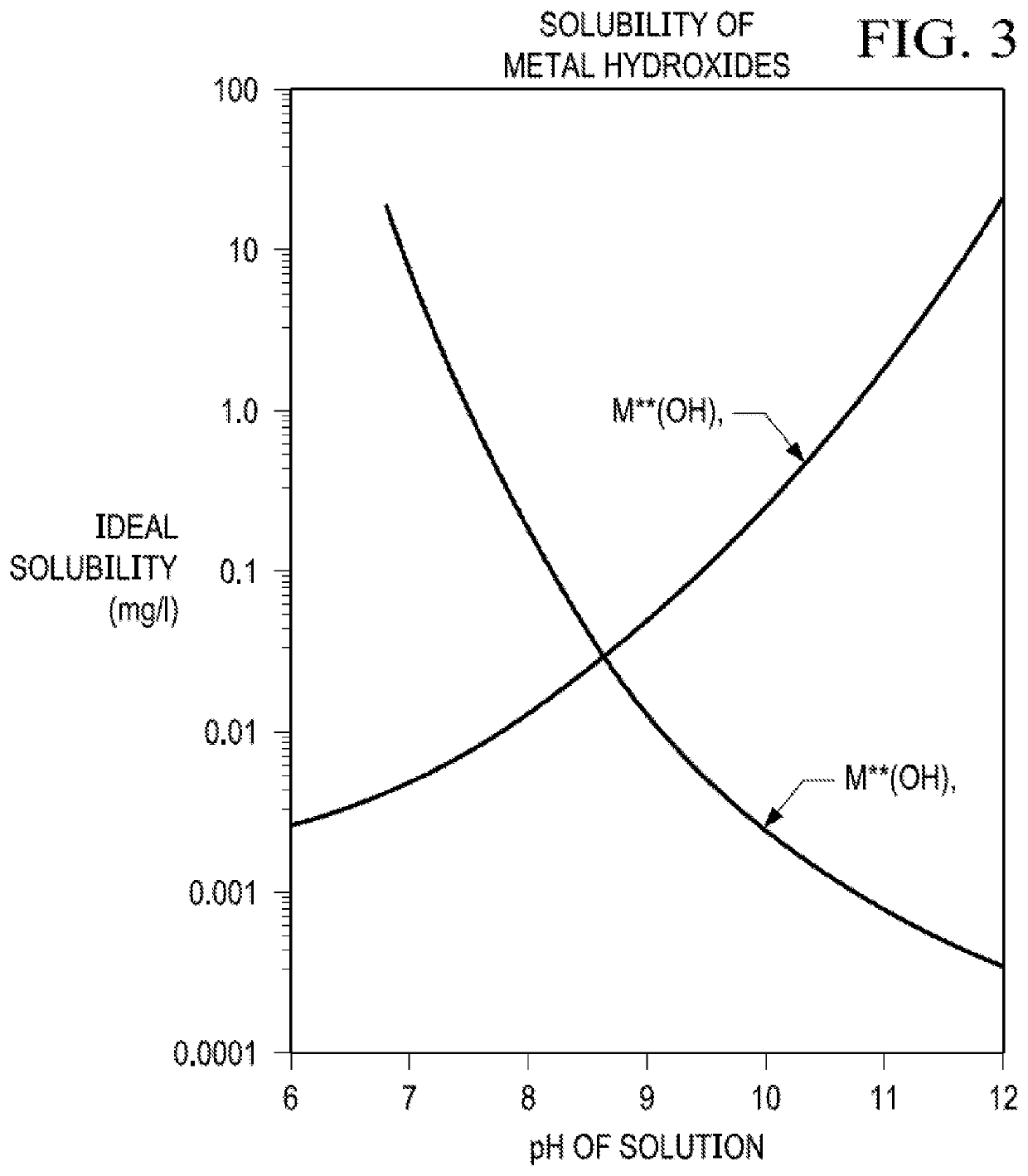Decomplexation of chelated hardness at high pH
a chelated hardness and complex technology, applied in the nature of treatment water, waste water treatment from quaries, borehole/well accessories, etc., can solve the problems of high cpf, high cpf, rapid fouling of steam generators, etc., and achieve high cpf. , the effect of high chelated levels
- Summary
- Abstract
- Description
- Claims
- Application Information
AI Technical Summary
Benefits of technology
Problems solved by technology
Method used
Image
Examples
Embodiment Construction
[0054]The invention provides a novel method of treating flowback from stimulated wells that has high levels of metal chelates. The flowback is shunted to a wellhead tank and treated with caustic until the metal chelates separate into metal hydroxides and chelator. The chelator is then degraded with the addition of hydrogen peroxide. The now treated flow has <90% of the original metal or chelator levels, and can be routed to the CPF and treated as any other production fluid. The invention has particular applicability to SAGD wells, which are susceptible to damage causes by the high temperature steam and sand and clay reservoirs, and thus are oft stimulated with chelators, but need not be so limited. Indeed, the method can be applied to any sand / clay based or EOR wells.
[0055]Early proof-of-concept experiments demonstrated that metal hydroxides will precipitate from EDTA complexes in distilled water (data not shown). A second proof-of-concept experiment, described here, was intended to...
PUM
| Property | Measurement | Unit |
|---|---|---|
| volumes | aaaaa | aaaaa |
| wavelengths | aaaaa | aaaaa |
| concentration | aaaaa | aaaaa |
Abstract
Description
Claims
Application Information
 Login to View More
Login to View More - R&D
- Intellectual Property
- Life Sciences
- Materials
- Tech Scout
- Unparalleled Data Quality
- Higher Quality Content
- 60% Fewer Hallucinations
Browse by: Latest US Patents, China's latest patents, Technical Efficacy Thesaurus, Application Domain, Technology Topic, Popular Technical Reports.
© 2025 PatSnap. All rights reserved.Legal|Privacy policy|Modern Slavery Act Transparency Statement|Sitemap|About US| Contact US: help@patsnap.com



